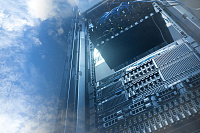On face value, SD-WAN might seem like a simple technology to deploy within your company network. But in reality there are numerous factors to consider if you want to ensure risks are mitigated and rewards fully realized.
With the widespread adoption of cloud services and virtualization straining traditional WAN architectures, any company that refuses to consider SD-WAN technology risks losing the edge they currently enjoy over the competition. This is because SD-WANs offer a range of important benefits that enhance the way services are delivered both internally and to customers.
By decoupling WAN hardware from the software that controls it, an SD-WAN is an overlay technology that acts like an upgrade to your existing network, simplifying WAN management and increasing flexibility and resilience. Deploying SD-WAN can mean better network control and performance, better security through end-to-end encryption, and significant cost savings.
But these benefits are not guaranteed. Hype surrounding SD-WAN combined with a lack of full understanding of the technology has led to unrealistic expectations in the boardroom. You cannot simply switch to any SD-WAN and immediately halve IT costs or ditch expensive MPLS migration requires careful consideration.
 |
Whether you are in the planning, deployment or optimization phase of SD-WAN, use our SD-WAN Test Guide to get you seamlessly through your journey. FREE EBOOK |
Factors the C-suite should consider
Before you make any decisions, it is important to look at the wide range of SD-WAN solutions on offer. Though they all route and prioritise traffic, factors like performance, visibility & control, security and extensibility need to be evaluated if you want to realize the full potential that SD-WAN can deliver for your business.
You will also need to assess the level of support offered and how that matches with your company’s in-house skills. But perhaps most important is the need to thoroughly understand your network, including its applications profile and diversity of remote site endpoints. This is because, as an overlay technology, SD-WAN is only as strong as its underlying network. Only with this understanding of your network will you truly be able to assess whether an SD-WAN will be effective for your company.
Ensure a fast & smooth migration
Though many organizations have specialized engineers who understand important elements of their network, it can be difficult to see all the strengths and weaknesses of a globally distributed complex infrastructure with a huge amount of potential sources of failure or degradation, and a wide variety of different traffic types competing for scarce resources. This not only makes choosing the right SD-WAN difficult, but it also means your business won’t know what kind of disruption migration will cause until it actually happens.
To mitigate these effects, and avoid unnecessary wastage of time, resources and products, most companies either employ a raft of analytics tools so as to react rapidly to any issues that might surface post-deployment or they go ahead with a real-world SD-WAN pilot. Neither strategy is ideal – both come with significant risks concerning network failures, slowness or delayed service provision, and a high likelihood of sub-optimal final deployment.
WAN emulators, such as the Calnex SNE, offer an alternative. By allowing your IT team to simulate the entire network and emulate real-world conditions into which an SD-WAN solution will be placed, WAN emulators not only remove the risks associated with migrating your network to SD-WAN, but also offer the means to truly understand your network. Most importantly, this knowledge can help you make better decisions about your company’s connectivity in order to meet business and customer needs both now and in the future.
Anand Ram
VP Business Development
Find out more about the test product here: Calnex SNE






































































